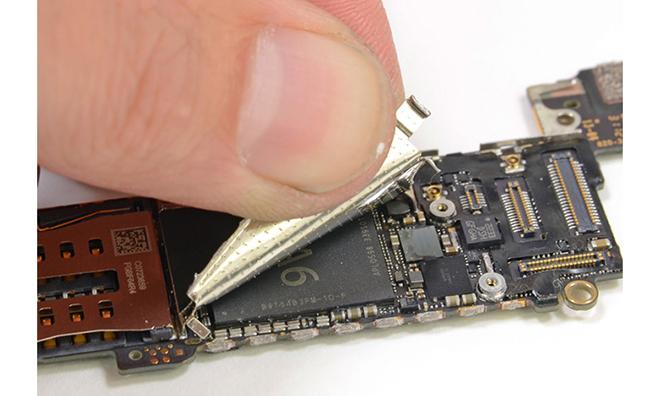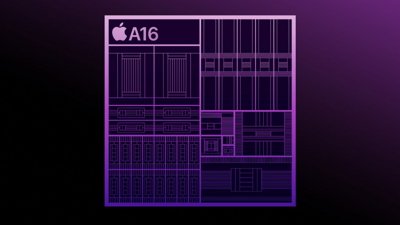Along with predictions of a much rumored "iPhone 5S," KGI analyst Ming-Chi Kuo's note to investors on Thursday shed some light on Apple's new A-series system on a chip, expected to be called the "A7."
With each successive iPhone generation, Apple has introduced a new processor design that trumps the outgoing version in both efficiency and speed. The current A6 used in the iPhone 5 was the first chip completely designed by Apple in-house, and the forthcoming "iPhone 5S" is predicted to build on that architecture with a so-called "A7" SoC.
Kuo believes Apple's upcoming A-series silicon to be based on the latest ARMv8 architecture. In comparison, the A6 was built on a custom ARMv7 setup that doubled number crunching and graphics speeds, while shrinking die size by 22 percent.
By stepping up to ARMv8, and tweaking hardware and software packages, Kuo believes Apple will manage to squeeze out a 20 percent increase in efficiency over the A6.
Boosting those numbers is the inclusion of LPDDR3 RAM, a faster memory specification than the LPDDR2 modules used in the A6. The increased bandwidth will allow Apple to maintain a relatively small amount of dedicated memory. Kuo expects the A7 to carry the same 1GB of on-die RAM seen with with the previous generation chip.
Kuo notes that there is no clear evidence indicating whether the A7 will support 32-bit or 64-bit processes, but says he "would not be surprised" to see 64-bit support this year. If 64-bit isn't included in the A7, however, Kuo says manufacturing trends will likely push Apple in that direction if and when a next-generation "A8" processor is released.
It is not yet known what company is fabricating Apple's next-generation SoCs, but one report claimed Cupertino will be moving away from longtime supplier Samsung in favor of Taiwan Semiconductor Manufacturing Co. (TSMC).
The details above come from a research note issued earlier on Thursday in which the analyst predicts Apple will release the iPhone 5S alongside new options like a gold color shell and 128GB of on-board storage.
 AppleInsider Staff
AppleInsider Staff







-m.jpg)






 Andrew Orr
Andrew Orr
 Wesley Hilliard
Wesley Hilliard

 Oliver Haslam
Oliver Haslam
 Christine McKee
Christine McKee
 Amber Neely
Amber Neely










88 Comments
Really hoping he's right... sounds lovely. Come on Kuo- make me a believer!
He is aware that he is talking about change instruction set architecture and not just new core implementation.. right?
has he actually consider that this would also require iOS7 to be retargeted for the new 64 bit instruction set architecture?
Throwing in third party apps into the equation would make it even more challenging as all the sudden we would have both 32 and 64 bit apps versions in the App Store for optimal performance.
If I was at Apple, I'd be freaking out if I was tasked with the releasing the biggest change to iOS since the original iOS release and also have to worry about changing to 64 bit environment at the same time.
I was wrong last year when I predicted the iPhone 5 would have a newer A5 with a die shrink and faster clock giving lower power consumption and a reasonable increase in speed. Then they surprised with the A6 which was a big jump from the A5.
I'd love to see an A7 this year but is it really necessary? The iPhone 5 is already fast and still compares well with the fastest Android phones available.
Then I have to look at history. From the 4 to 4S to 5 Apple basically doubled performance each time (4-4S was more than double). So I think it's likely we'll see an A7 and a PowerVR 6 series.
Off topic, but what I'd like to see is an A7 with 4 PowerVR 6 GPU cores in an Apple TV. Allow devs to write Apps and watch it take off as a capable gaming platform. The current Apple TV just doesn't have the power to run good games at HD resolution.
Breaking: something else so blindingly obvious only an idiot would say otherwise.
I think that covers it, yeah? We've exhausted the wetness of water, spin of the Earth, and apparent color of the reflected wavelength of the sky.
I'd love to see an A7 this year but is it really necessary? The iPhone 5 is already fast and still compares well with the fastest Android phones available.
An A7 this year may not be really necessary, but anything released this year needs to run iOS and apps being released in 2016 or later just to allow Apple products to boast of a value no other phone company can match.
Which brings me to try to imagine what a 2016 iPhone might offer as leading edge features... what indeed??